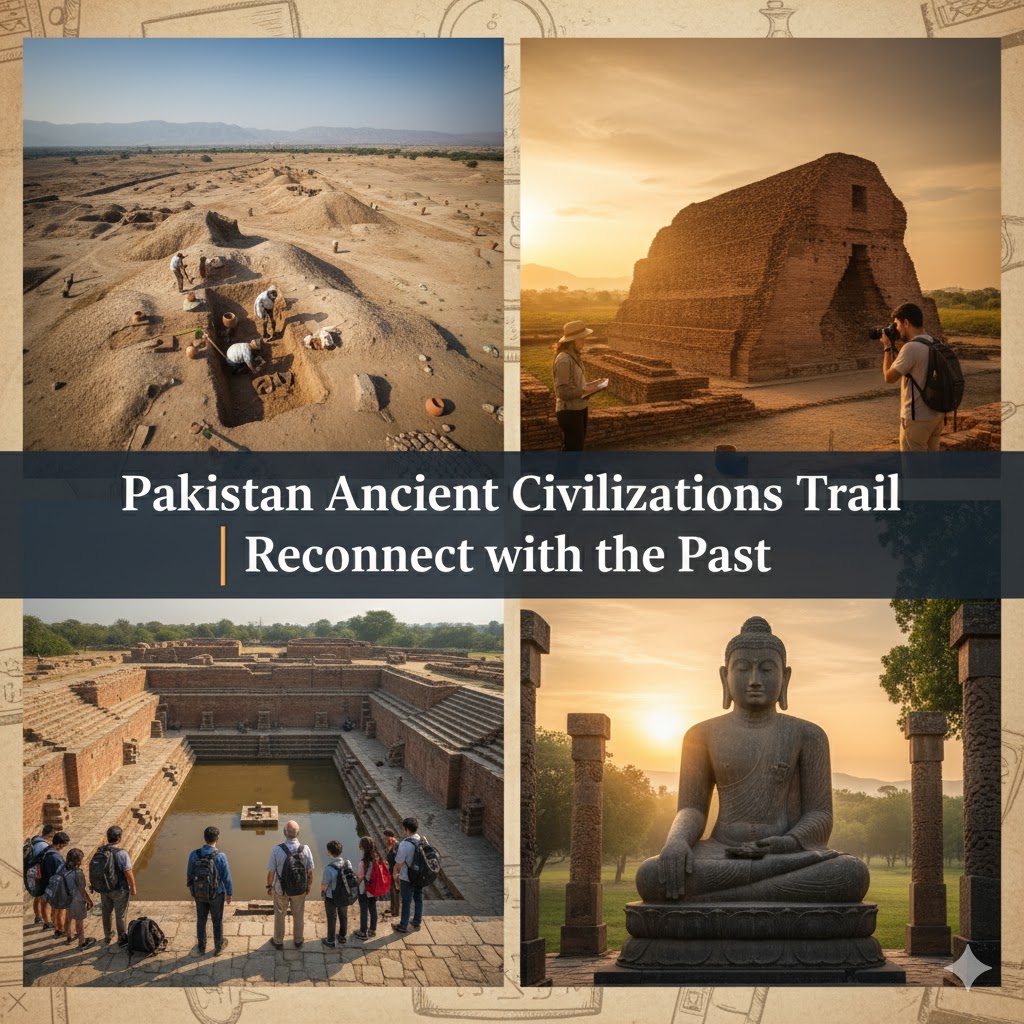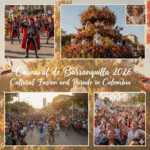Introduction: Ancient Civilizations Trail of Pakistan
Discover Pakistan Ancient Civilizations Trail is not just a travel route — it’s a living time capsule spanning more than 7,000 years of human history. From the early farming settlements of Mehrgarh to the mighty cities of Mohenjo-Daro and Harappa, and onward to the Buddhist marvels of Gandhara, this route captures the cultural heartbeat of South Asia’s ancient soul.
This trail connects archaeology, spirituality, and adventure, letting travelers uncover ancient engineering, art, and architecture that still inspire today. In 2026, government-led heritage projects and improved infrastructure are making it easier than ever to explore these timeless sites — from Balochistan’s desert mounds to Khyber Pakhtunkhwa’s mountain monasteries.
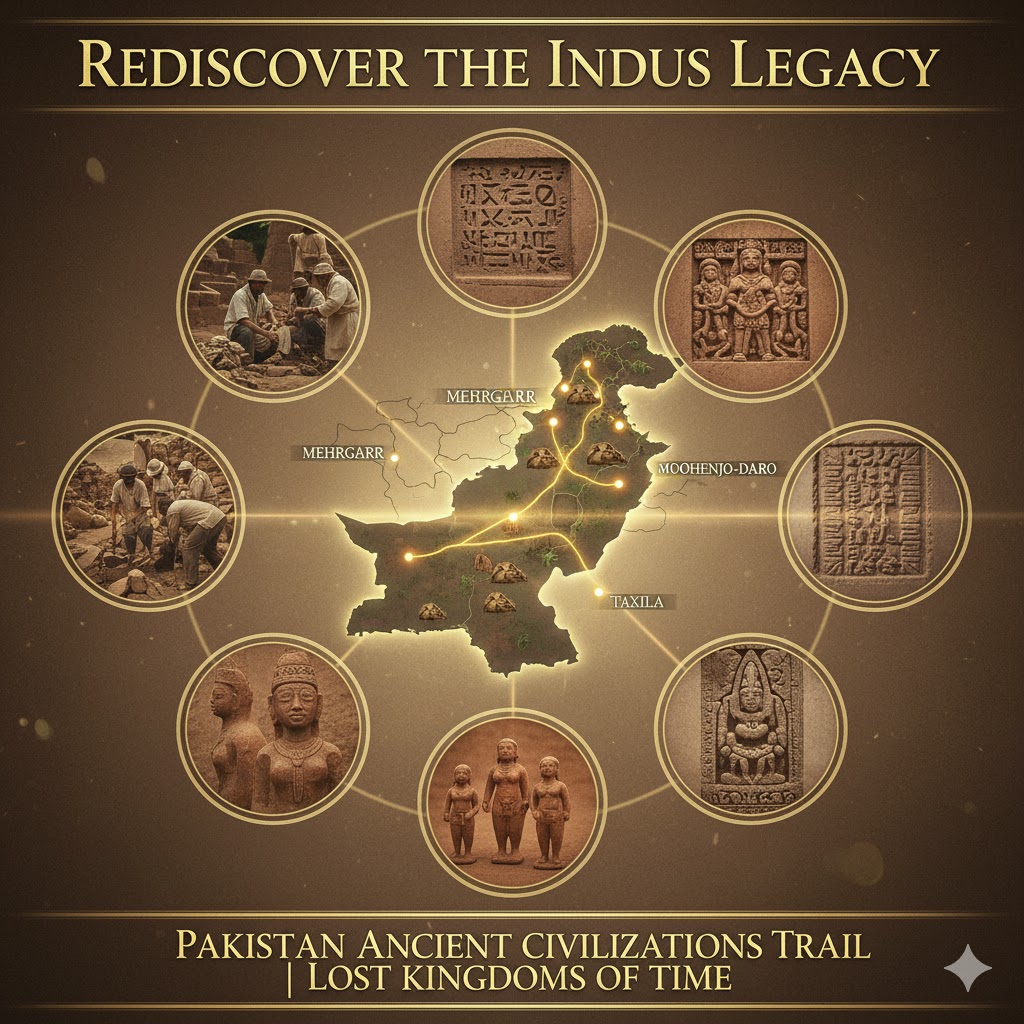
🏛️ Mehrgarh — The Birthplace of Civilization
Located near Bolan Pass in Balochistan, Mehrgarh is one of the world’s earliest farming villages (7000 BCE). Archaeologists discovered evidence of early agriculture, pottery, and even dentistry here. Walking through its sun-dried mud-brick ruins offers a glimpse into humanity’s transition from nomadic to settled life.
The Quetta Archaeological Museum displays artifacts such as terracotta figurines, beads, and early tools from Mehrgarh — a perfect prelude to the Ancient Civilizations Trail.
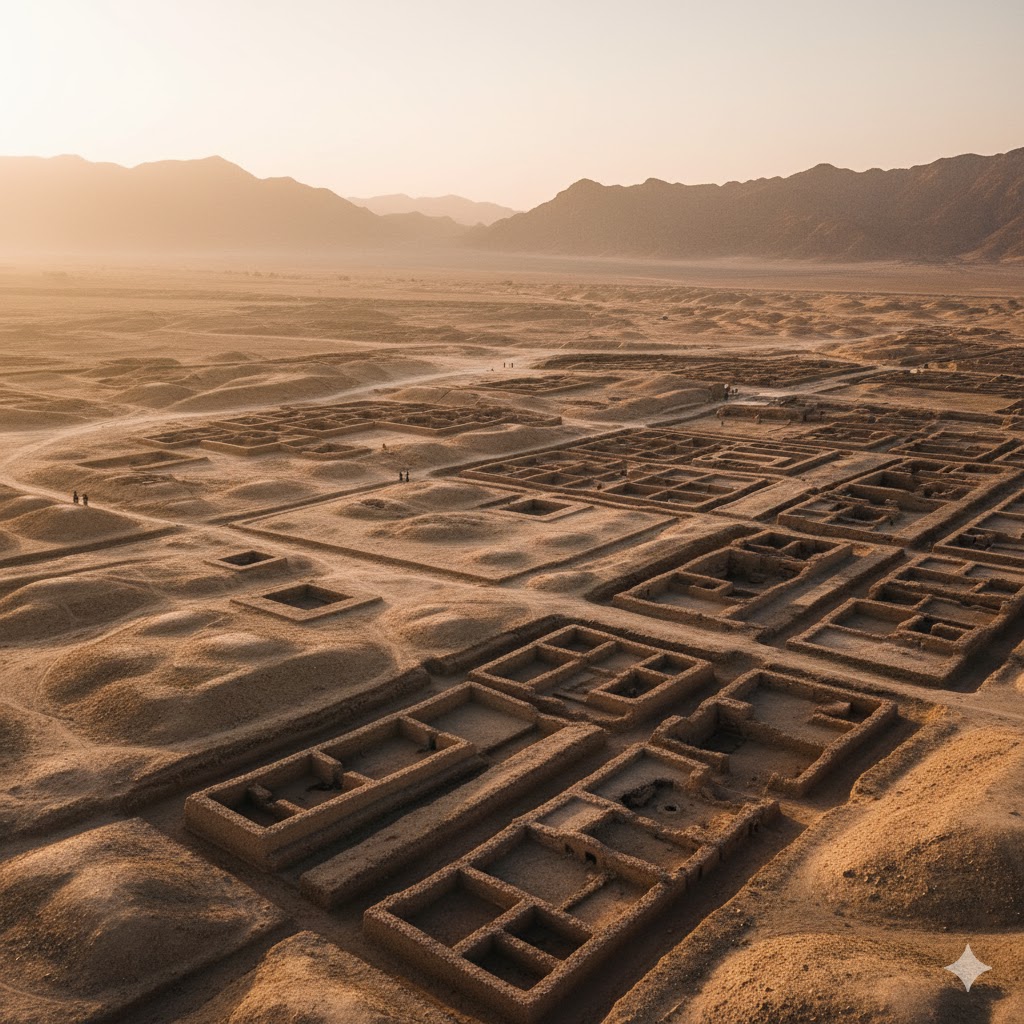
Read More: Learn about early heritage in Mughal Architecture in Sindh – Tombs, Forts and Mosques.
Source: Explore archaeological details at UNESCO World Heritage Mehrgarh Report.
🏙️ Harappa — The First Urban Metropolis
Harappa, located near Sahiwal in Punjab, reveals a highly organized urban society from around 2600 BCE. Travelers can explore paved streets, advanced drainage systems, and granaries that highlight the scientific genius of the Indus Valley Civilization.
The Harappa Museum showcases seals, pottery, jewelry, and scripts that remain undeciphered. Visitors can attend the 2026 “Indus Culture Exhibition,” featuring new 3D reconstructions of Harappan cities.
Read More: Explore ancient in Gandhara Heritage Route in Pakistan 2026 Explore Ancient Buddhist Trails
Source: Learn more from Archaeological Survey of Pakistan.
🏰 Mohenjo-Daro — The City of the Dead, Alive in Memory
Few places on earth compare to Mohenjo-Daro, a UNESCO World Heritage Site in Sindh. Built around 2500 BCE, its meticulous urban design, water systems, and the mysterious “Great Bath” reveal a civilization of remarkable sophistication.
Recent conservation in 2026 has introduced guided augmented-reality tours, allowing travelers to visualize life as it was 4,500 years ago. Sunset at Mohenjo-Daro — with birds circling above and ancient bricks glowing in orange light — is an emotional highlight of the trail.
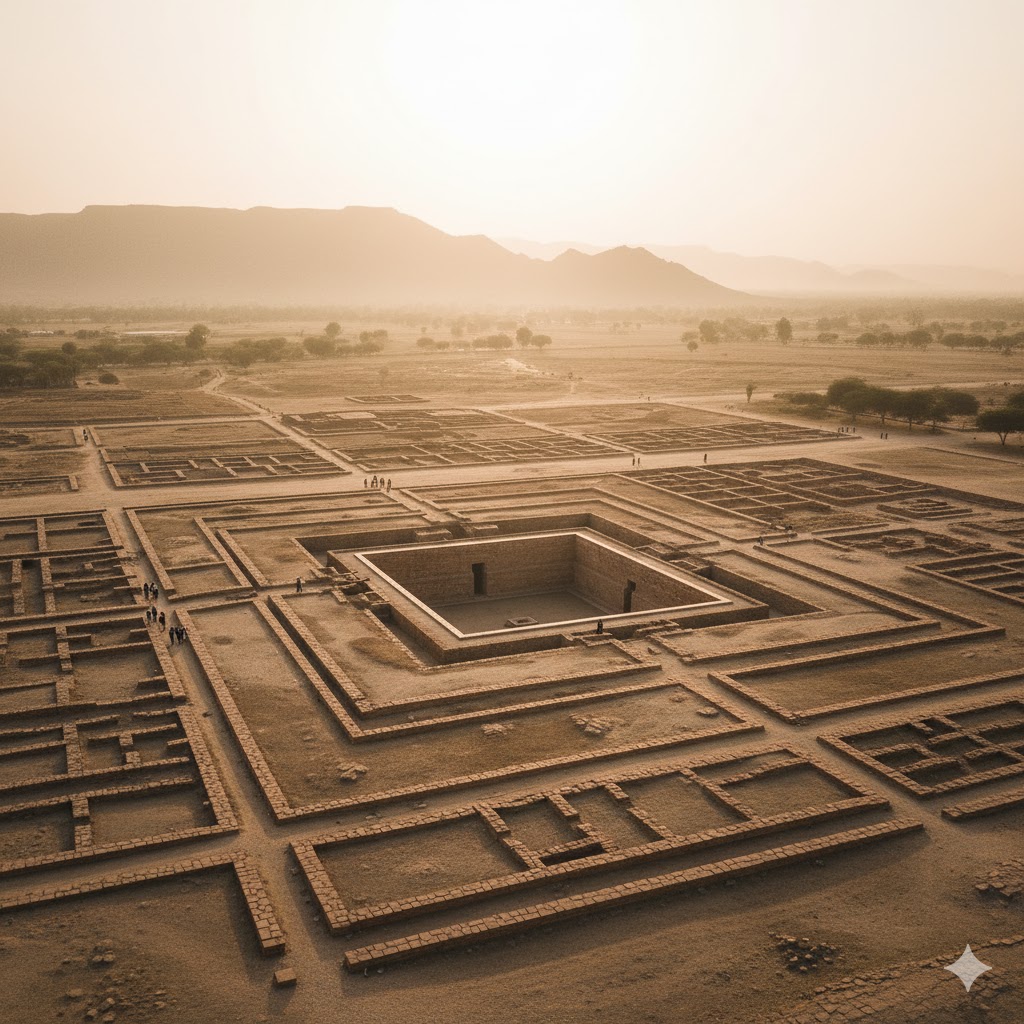
Read More: Discover Sindh’s Mughal legacy in Explore Mughal Architecture in Sindh (2026).
Source: Official visitor info via UNESCO Mohenjo-Daro Heritage Site.
🕉️ Gandhara Civilization — Spiritual Echoes of Art & Wisdom
Travel north toward Taxila and Swat, where the Gandhara Civilization (500 BCE–1000 CE) thrived. The fusion of Greek and Buddhist influences produced breathtaking sculptures, monasteries, and stupas.
Key sites include:
- Dharmarajika Stupa (Taxila) – The oldest Buddhist relic site in Pakistan.
- Takht-i-Bahi Monastery (Mardan) – A UNESCO-listed masterpiece of rock-cut design.
- Butkara Stupa (Swat) – Known for serene carvings and Gandhara’s distinct artistic style.
Gandhara marks the final leg of Pakistan’s Ancient Civilizations Trail — where philosophy and art merged into global heritage.
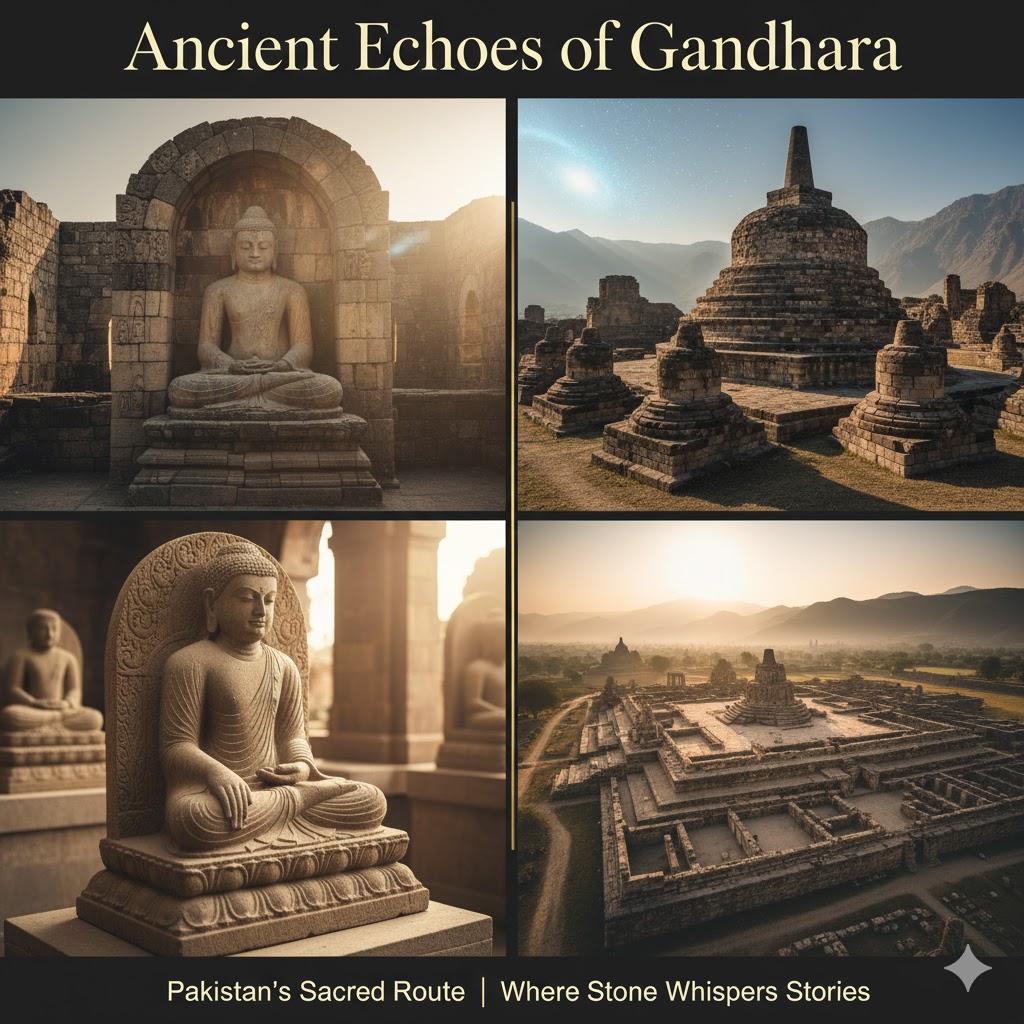
Read More: Explore deeper through Gandhara Heritage Route Pakistan (2026).
Source: More at UNESCO Gandhara Sites Directory.
🧭 Travel Itinerary — 7-Day Ancient Civilizations Trail 2026
| Day | Destination | Highlights |
|---|---|---|
| Day 1 | Karachi → Mehrgarh | Archaeological visit, museum stopover |
| Day 2 | Harappa | Museum & site tour |
| Day 3 | Mohenjo-Daro | Great Bath, stupa walk, sunset view |
| Day 4 | Hyderabad | Heritage night stay |
| Day 5 | Taxila | Gandhara museums, stupas |
| Day 6 | Swat Valley | Butkara Stupa & Buddhist sculpture trail |
| Day 7 | Islamabad | Heritage exhibition & cultural finale |
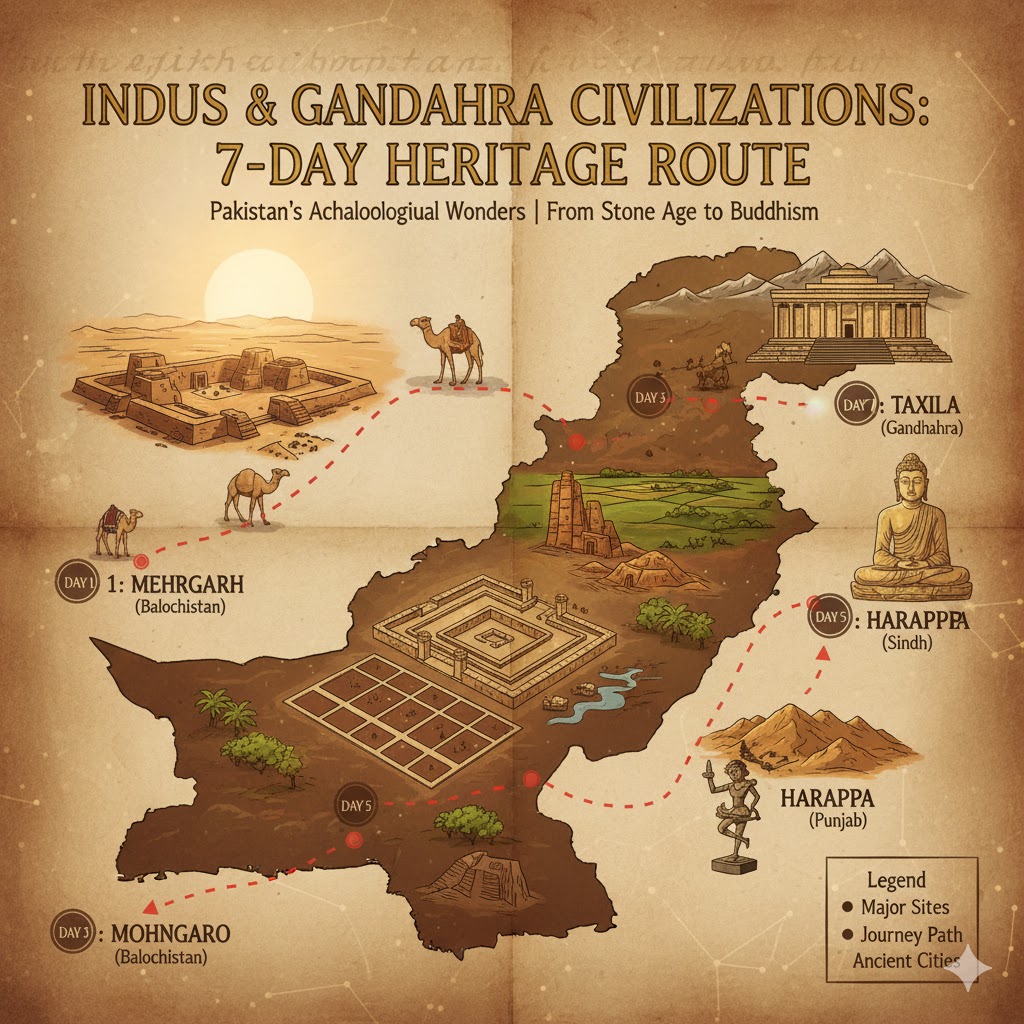
🧳 Traveler Tips
- Best Time to Visit: October–March for pleasant weather.
- Entry Fee: Around PKR 500–1000 per site (foreigners may pay slightly more).
- What to Pack: Comfortable shoes, hat, refillable water bottle, and camera with filters.
- Safety Tip: Respect heritage boundaries; some excavation zones remain fragile.
🌏 Cultural Insight: The Spirit of Continuity
These civilizations didn’t vanish — they evolved. The craftsmanship of Mehrgarh, urban genius of Harappa, sacred art of Gandhara, and architectural grace of Mohenjo-Daro echo in Pakistan’s living traditions.
The Discover Pakistan’s Ancient Civilizations Trail (2026) connects not just ancient cities but also the spirit of innovation and resilience that defines the nation today.
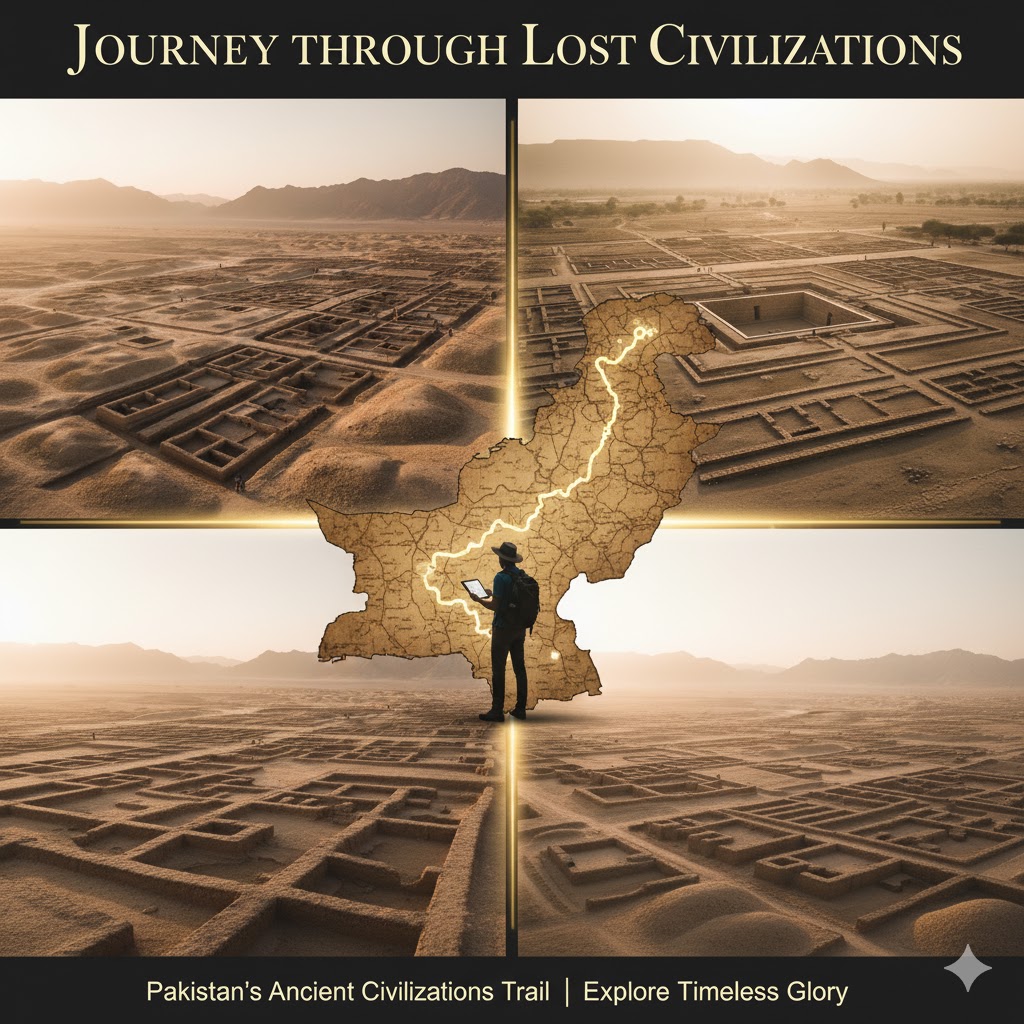
🧠 FAQs
Q1. What is the total distance of the Ancient Civilizations Trail?
It spans roughly 1,500 km, connecting Balochistan, Sindh, Punjab, and Khyber Pakhtunkhwa.
Q2. How many UNESCO World Heritage Sites are included?
Currently three: Mohenjo-Daro, Taxila, and Takht-i-Bahi.
Q3. What languages are spoken along the trail?
Mostly Urdu, Sindhi, Punjabi, and Pashto; English is understood at major tourist points.
Q4. Is it safe for solo travelers?
Yes, the 2026 route is secure with regular checkpoints and guided tours available.
Q5. Can I visit all sites in one week?
Yes, a 7-day itinerary comfortably covers key highlights with minimal road fatigue.
Q6. Are there any annual festivals linked to these sites?
Yes, the Indus Cultural Week (February) and Taxila Heritage Festival (November) attract local and international visitors.
Q7. Is photography allowed?
Yes, with some restrictions at protected excavation areas.
Q8. Which city is the best starting point?
Karachi is ideal — with direct access to Mehrgarh and onward connections to Sindh and Punjab heritage routes.

